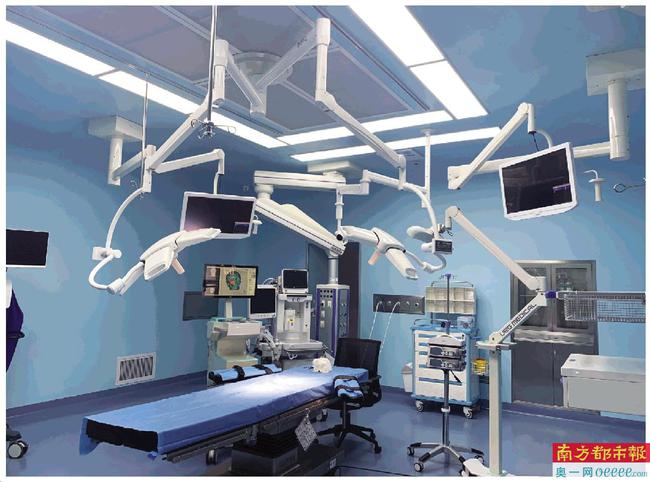Stomatology hospital gets big upgrade
Writer: Zhang Yu | Editor: Holly Wang | From: Shenzhen Daily | Updated: 2021-03-12

The maxillofacial surgery navigation system is seen at a surgery room of Shenzhen Stomatology Hospital. Courtesy of the hospital
After its trial operation in December 2019, the Shenzhen Stomatology Hospital announc-ed Thursday that it is getting an upgrade to its facilities this month to better provide health services to citizens.
The hospital, located at No. 70 Guiyuan North Road in Luohu District, is the first city-level public stomatology hospital in Shenzhen. It covers a total construction area of 16,160 square meters.
The hospital said it plans to add more than 70 new dental chairs to reach a total of 100. Before the upgrade, it offered 25 dental chairs in its outpatient building.
The hospital will also open a maxillofacial surgery center covering 4,000 square meters, which is equipped with the first digital navigation system for maxillofacial surgery in South China.
Professor Zhu Yaomin, a member of the Special Committee on Temoromandibular Joint (TMJ) Disease of the Chinese Stomatological Association, is in charge of the hospital’s maxillofacial surgery department.
“In the past, a navigation system was mostly adopted in orthopedics or neurosurgery, not for maxillofacial surgery. The absence of such a system in a maxillofacial surgery might, more or less, impact the accuracy of the operation,” said Zhu.
According to Zhu, the maxillofacial surgery navigation system is independently developed by the Shanghai Ninth People’s Hospital of Shanghai Jiao Tong University School of Medicine.
The system also has an important role to play when it comes to enhancing facial appearance. For instance, a patient with underbite usually needs an orthognathic surgery.
“There is a great demand for oral and maxillofacial surgery not only from patients with facial deformities, but also people who want to be more good-looking,” said Zhu, adding that doctors are able to optimize surgery planning with the help of sophisticated equipment such as the navigation system, high-definition surgery broadcast system and intraoral scanner.